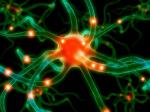
New stimuli light up your brain
Winifred Gallagher is the author of New: Understanding our Need for Novelty and Change. Her book explores why we humans are so attracted to things that are new to us. I should start by saying that not all of us are. Gallagher calls people who are not open to new experiences “neophobes,” as opposed to “neophiles,” who seek out change and new experiences. I’ve written in a previous post about what are called “The Big Five” personality traits. Openness (to new experiences) is one of the traits scientists feel is hard-wired into our brains, almost from birth. Psychologists have observed babies and monkeys who are either fascinated or distressed by new stimuli; they estimate that, like many personality traits, about 50 percent of your tendency toward neophilia or neophobia is hereditary; the rest may be learned from your early circle of family members.
Our human brains develop the ability to focus on what’s new in response to the dangerous physical environment we found ourselves in. A rustle in the bushes most likely meant a predator or enemy; a bright red berry against the green foliage meant food. Those who didn’t notice and zoom in on new stimuli didn’t live very long, so we evolved as a species to get better and better at this skill. Eventually, we evolved so that our brains received a pleasurable hit of dopamine when we perceive something new. It’s the strength of this chemical reaction in your brain that determines whether you’re a thrill-seeking adventurer or someone who prefers to stay at home by the fire. One of the reasons that Homo sapiens beat out the Neanderthals in evolution is that the Neanderthals were neophobes; they distrusted strangers and rarely adventured far from where they were born. As drought, freezes or predators took out members of the tribe, they did not react by moving on to safer places. Eventually, they died out altogether.
Today, you don’t have to worry about dying out if shiny new things don’t excite you. Gallagher explains that neophobes’ brains react to stimuli in a very different way than novelty-seeking neophiles. Their response is to avoid the new idea, person or object – to take a ‘wait and see’ approach. All of us fall somewhere on the spectrum of neophilia, and there is no right or wrong trait; there are simply better traits for certain situations.
Our brains are wired to get a thrill from something new (to one degree or another), but then to dull to the effect after a short time. This important trait allows us to free up processing capacity in our brains and continue to notice new things. It’s why a new pair of shoes is so much more pleasing than the 36 pairs you already own, and why some people find strangers more attractive than their spouses. This ancient survival mechanism is tied to addictive behavior; we crave the next sensation, and it gradually takes more and more of whatever we crave to get the same dopamine rush.
According to Gallagher, the word “boredom” doesn’t even exist in many cultures. She writes that boredom is one of the few words in English with no derivation; it doesn’t come from any previous word in any language. It appears first in the eighteen century, and appears to have been coined to describe what was evolving as a new emotion – feeling that nothing was interesting. At first, boredom was described as a moral failure (and sometimes still is, by parents throughout the world.) But in this era of constantly available stimulation, boredom is, astonishingly, more rampant than it has ever been.
There are a million distractions available on the Internet, from breaking news to Angry Birds. But the information and stimulation flowing to us at the speed of light cannot be assimilated and turned into knowledge at the speed we receive it. (Our brains have not evolved that much.) Without time to reflect and process and practice, we will never be able to master knowledge or become competent at a skill. The constant multitasking we do (texting while watching television and reading on the internet) has been proven in studies to be inefficient and sometimes dangerous. No matter how quickly you switch between tasks, you will not retain much of what you read or experience. The other downside of this behavior is that our brains can actually change – they become wired to expect the constant stimulus and we lose our ability to focus for any length of time on something that’s not moving and entertaining us (like books, nature, or what our children are saying at the moment.)
We need what Gallagher calls “restorative downtime” to be able to process what we’ve experienced and understand it. If you’re not scheduling down time for your brain, you’re not performing at your peak.
For a cool test of how well you switch between tasks, click here.

